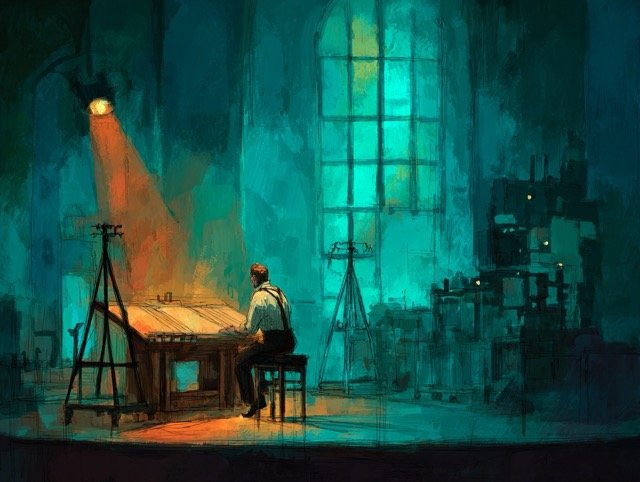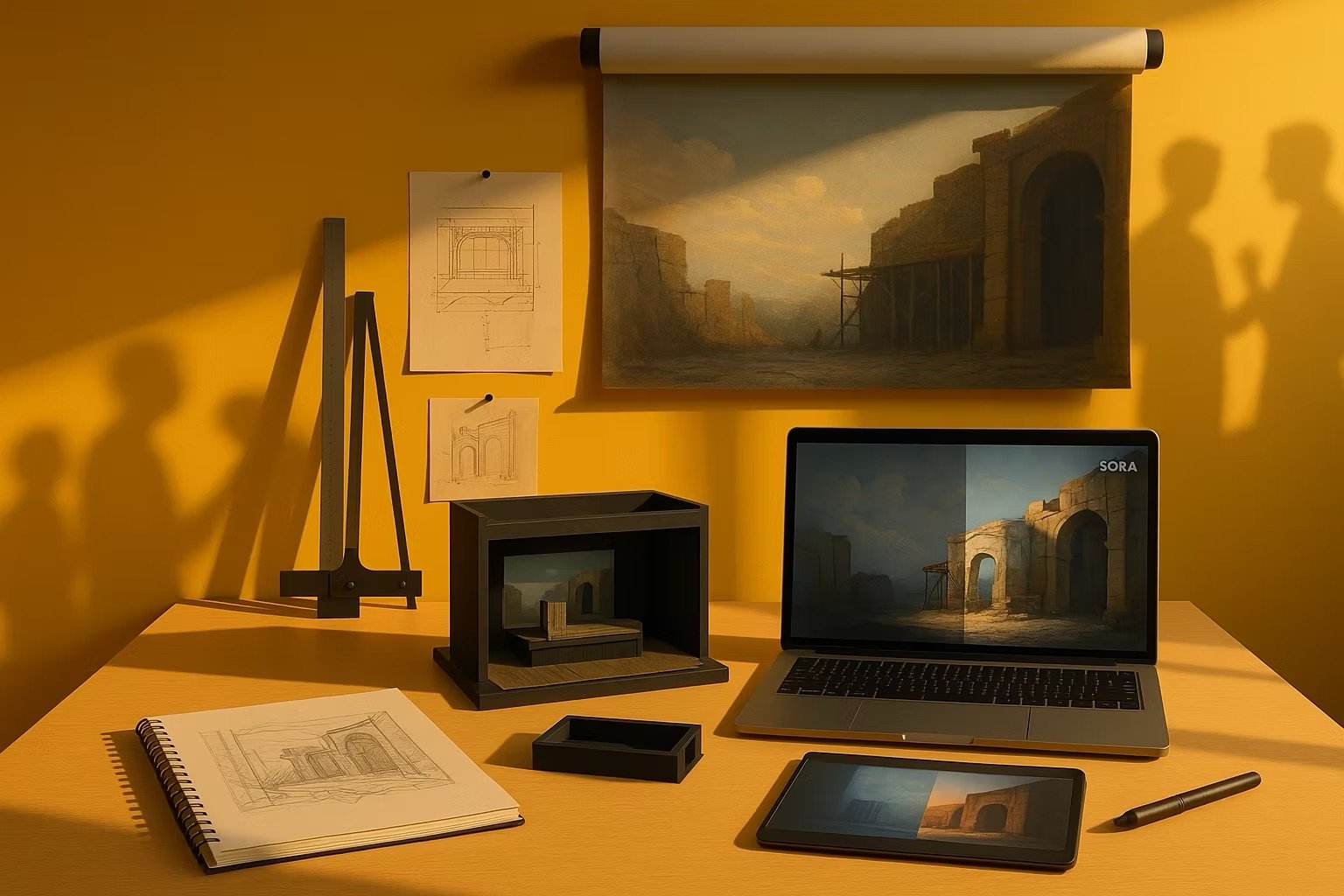Scenic Insights
A designer’s perspective on process, philosophy, and the tools that bring ideas to life.
What Makes a Good Scenic Design Rendering?
Scenic renderings are more than visual polish—they’re moments of story, frozen in light and space. In this post, I break down what makes a scenic rendering effective, from composition and atmosphere to the emotional weight of lighting and color.
Sora in the Studio: Testing AI's Potential for Theatrical Design
AI tools are reshaping design, but Sora offers something uniquely valuable for scenic designers. By enhancing rather than replacing existing renderings, it creates space for collaboration and clarity. These experiments explore how AI might complement traditional craft—helping emerging designers adapt without losing their voice.
Understanding Computer Hardware: Why Scenic Designers (and All Theatre Designers) Need to Care
Theatre designers depend on computers as much as pencils and sketchbooks—but when hardware lags behind software, creativity suffers. From scenic rendering to lighting visualization, understanding CPUs, GPUs, and memory isn’t just technical trivia—it’s essential knowledge that protects your workflow, your time, and ultimately, your artistry.



